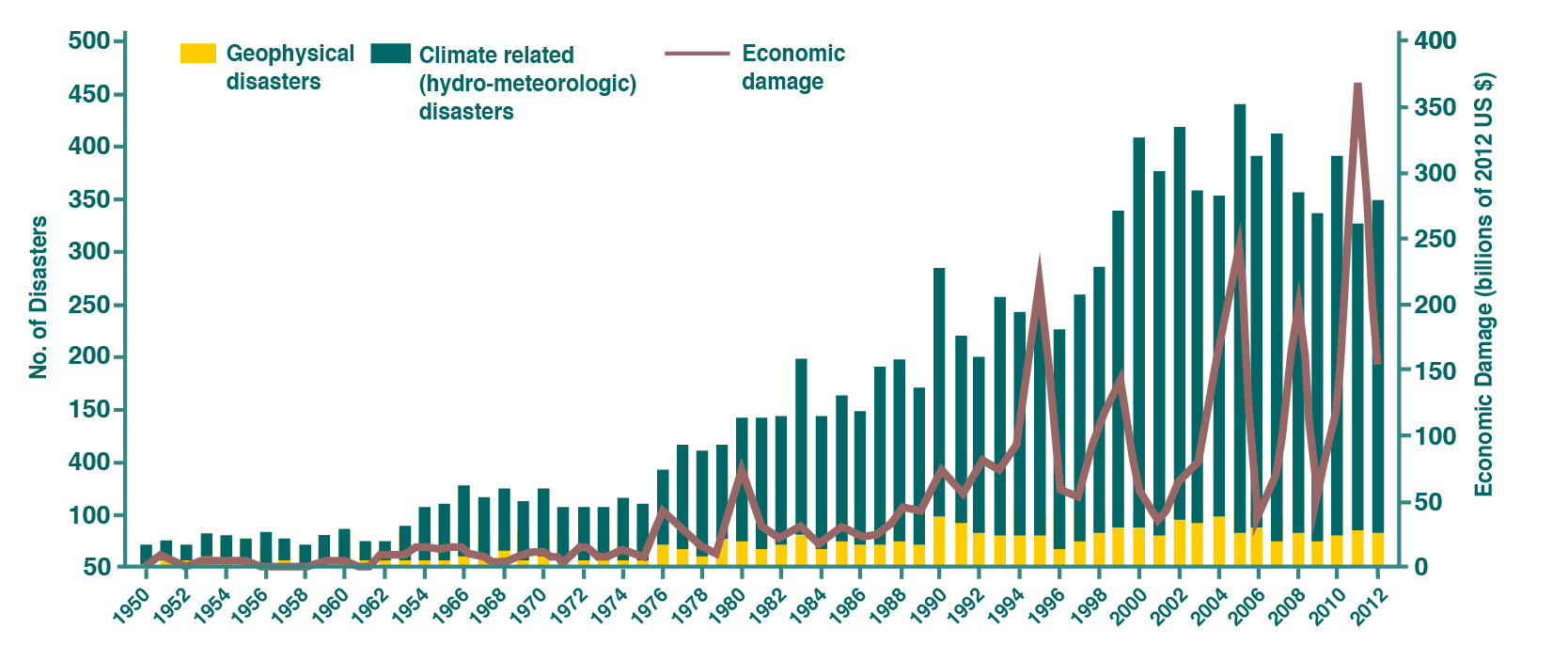“The gains from investing in low emission, climate-resilient infrastructure will more than offset the impact of higher energy prices, tighter regulatory settings, and high carbon assets that may become economically stranded before the end of their economic life.”
The Organisation for Economic Co-operation and Development (2017)
The past few months have been devastating for many people around the world. Historic hurricanes, massive earthquakes, and intense wildfires have simultaneously struck the Americas, causing an estimated $300 billion in damages. Monsoons and flooding continue to wreak havoc across Asia, directly affecting over 40 million people. While policymakers and environmental scientists trip over themselves debating the cause of such extreme weather events, affected communities are left to face the very real consequences. Homelessness, lack of resources and the unrelenting destruction of infrastructure are becoming commonplace. The need for innovation in the field of climate resilience has never been greater.
As a threat multiplier, climate considerations must be taken seriously. Droughts, floods, extreme weather, rising temperatures and rising seas are affecting economies and livelihoods in profound ways worldwide. Even though dangerous storms, the challenges of emergency response and the consequences of poor adaptation existed well before knowledge of man-made climate change, this phenomenon clearly makes matters worse. Increased coastal flooding is a direct result of rising sea levels. The one-foot sea level rise around New York City has increased the likelihood of a Sandy-like storm surge of 14 feet, led to 25 additional square miles of flooding during hurricanes and cost several billion extra dollars of damage. Every degree Celsius of global warming leads to an eight meters per second increase in the wind speed of hurricanes. This is terrifying, especially when you consider that Hurricane Irma sustained record-breaking speeds of 185 miles per hour!
.
The Rising Cost of Natural Disasters
Source: International Disaster Database (2016)
.
The only solution is to drive climate-smart innovations across industries to better protect ourselves from extreme weather events. The World Economic Forum projects that $5.7 trillion will need to be invested annually in green infrastructure for climate change adaptation. The Climate Policy Initiative estimated that private investment in climate-resilient infrastructure reached $360 billion per year in 2016. Governments offered up to $20 billion. While there is no denying the scale of the challenge ahead, this is a profound opportunity to create new, regenerative and environmentally conscious systems that create sustainable value.
.
Crop and Livestock Production Losses After Natural Disasters
Source: United Nations Food and Agriculture Organization (2016)
.
This is especially true in agriculture. Extreme weather events are taking a severe toll on our global food supply as land degradation compromises yield potential. Food production is expected to decline by 2% every decade until 2050, just as the global population reaches 9.7 billion. Developing innovative ways to improve agriculture’s ability to withstand some of the more adverse effects of climate change will help secure our global food supply in the face of these compounding pressures. Shifting production systems into ecological processes that establish synergies with the environment instead of depleting natural resources is essential. The use of natural crop care solutions, nitrogen-fixing cover crops, and sustainable soil management techniques will strengthen yields and increase resilience to climatic threats.
This can be achieved with the help of one incredible resource – neem!
Agriculture has always been the interface between natural resources and human activity, holding the solution to two grand challenges: eradicating hunger and maintaining a stable climatic corridor in which civilization can thrive. We take this responsibility very seriously by actively placing ourselves at the forefront of agricultural discovery and innovation.

